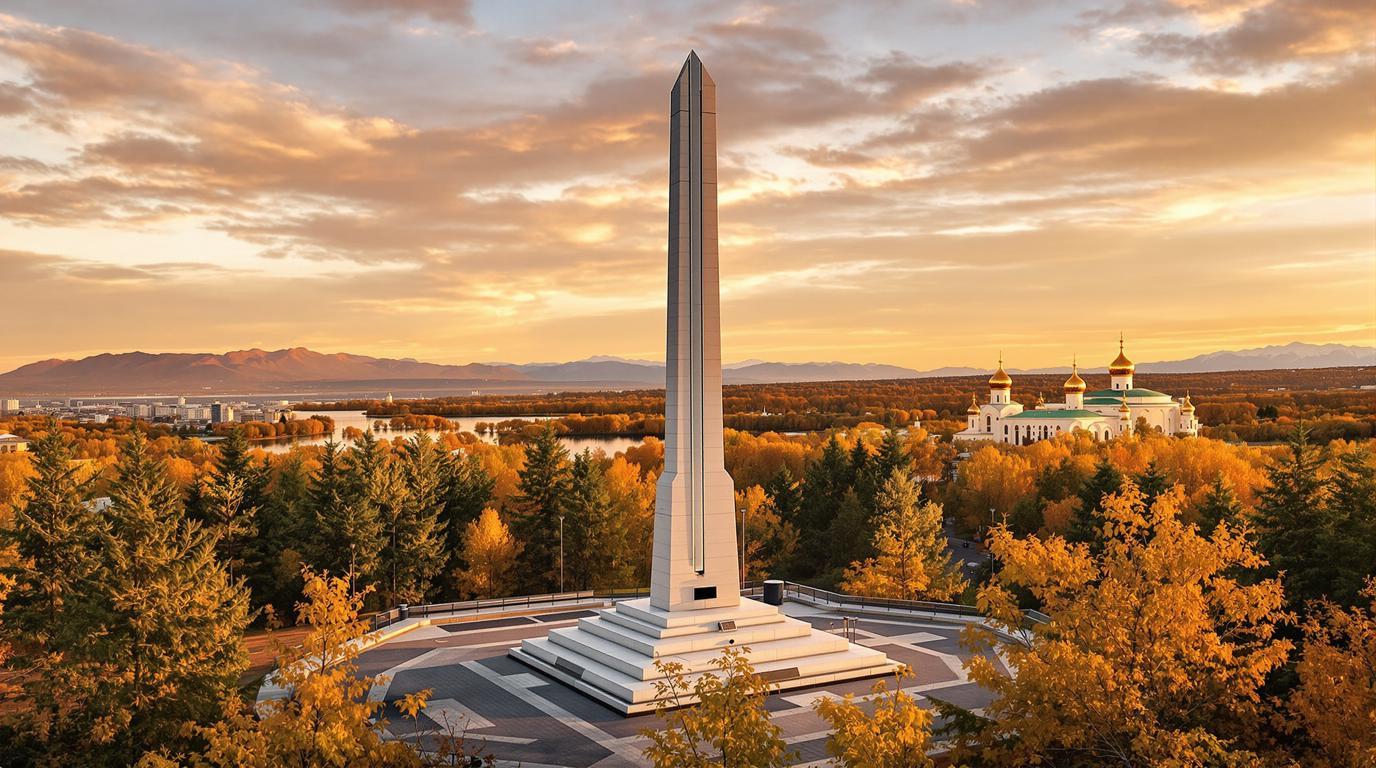Yekaterinburg sits at a fascinating crossroads where Europe meets Asia, yet remains largely undiscovered by Western travelers. This Russian metropolis in the Sverdlovsk Oblast offers something increasingly rare in our overly-touristed world: authentic experiences without the Instagram crowds. As I stood at the Europe-Asia border monument just outside town, one foot on each continent, I realized I’d found a destination that truly bridges worlds.
Where two continents collide: Yekaterinburg’s unique geography
Few cities can claim to straddle continents, but Yekaterinburg’s position along the Ural Mountains makes it a genuine continental divide. The city serves as Russia’s gateway to Siberia, creating a cultural melting pot where European refinement meets Asian influences. This geographical significance has shaped everything from the city’s cuisine to its architecture.
“Our city exists in two worlds simultaneously,” explains Irina, a local historian I met at the Yeltsin Center. “You can feel the European sensibility in our downtown boulevards, but our markets and eastern districts carry distinctly Asian character.”
The last days of the Romanovs: A haunting historical legacy
History buffs will recognize Yekaterinburg as the place where Tsar Nicholas II and his family met their tragic end in 1918. The Church on the Blood, built on the execution site, stands as a solemn memorial with golden domes that catch the afternoon light. Nearby, the Ganina Yama Monastery complex adds another layer to this somber pilgrimage.
The story doesn’t end with tragedy, though. Like Finland’s hidden coastal treasures, Yekaterinburg has transformed its complex history into compelling attractions that draw thoughtful travelers.
Soviet brutalism meets modern glass: Architectural contrasts
What struck me immediately about Yekaterinburg was its architectural diversity. The city offers a living museum of Russian design through the centuries. Imposing Soviet-era apartments stand beside gleaming skyscrapers like the Vysotsky Tower, where an observation deck provides panoramic city views.
In the Literary Quarter, wooden houses with ornate carvings harken back to 19th-century merchant wealth. Meanwhile, constructivist buildings showcase revolutionary design principles that influenced architecture worldwide.
Beyond borscht: A surprising culinary renaissance
Yekaterinburg’s food scene presents a delightful surprise. Traditional Russian staples like pelmeni (dumplings) sit alongside Tatar influences from the east. The city has embraced farm-to-table concepts, with restaurants like Gastroli and Troekurov celebrating local ingredients in contemporary settings.
For travelers who’ve explored hidden European villages, Yekaterinburg offers similarly authentic culinary discoveries without pretension or tourist markup.
The soul of the Urals: Cultural immersion
The Yeltsin Center stands as Yekaterinburg’s cultural crown jewel – a world-class museum examining Russian democracy through interactive exhibits. But the city’s artistic spirit extends much further. The Metenkov House photography museum, housed in a historic wooden mansion, showcases both historical and contemporary visual arts.
“We’re not Moscow or St. Petersburg, and that’s our strength,” shares Pavel, a local artist. “Here, creativity isn’t about following trends. We make art that speaks to our unique position between worlds.”
Off the beaten path: Hidden gems only locals know
Like those secret Caribbean beaches that make you forget crowded resorts, Yekaterinburg harbors unexpected treasures. The Stone Tents (Kamenniye Palatki) offer prehistoric rock formations within city limits. Nearby, the scenic Shartash Lake provides a peaceful retreat with forest hiking trails.
The Red Line walking path connects 35 city landmarks with a literal painted line on sidewalks – a brilliant self-guided tour option few international visitors discover.
When to visit: Seasonal considerations
Yekaterinburg experiences distinct seasons, each offering unique charms. Summer (June-August) brings warm days perfect for exploring outdoor attractions and the nearby Ural Mountains. Fall paints the city in spectacular colors, while winter transforms it into a snow-covered wonderland reminiscent of classic Russian literature.
If you’ve enjoyed discovering secret Greek islands, consider Yekaterinburg your next off-season adventure – particularly in May or September when crowds thin but weather remains pleasant.
Yekaterinburg isn’t just a place – it’s a journey through Russia’s complicated past and promising future. Standing at the border between continents, watching summer sunset illuminate both European elegance and Asian influence, I realized that some destinations don’t need barrier reefs or palm trees to qualify as paradise. Sometimes, the most rewarding travels happen at intersections – of cultures, continents, and histories – where we discover not just new places, but new perspectives.
